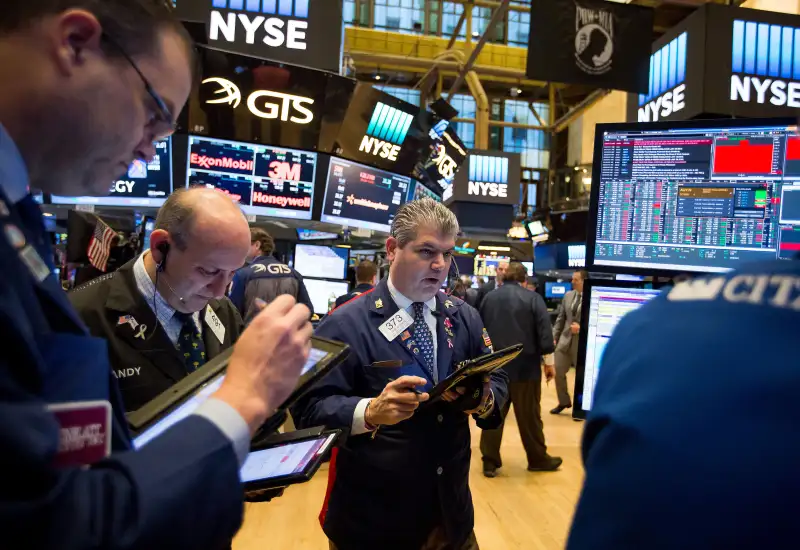Stocks Slip as Investors Await Election Results
Money is not a client of any investment adviser featured on this page. The information provided on this page is for educational purposes only and is not intended as investment advice. Money does not offer advisory services.

U.S. stocks slipped in cautious trading on Tuesday morning as Americans headed to elect their next president, with the odds currently favoring Democrat nominee Hillary Clinton.
Clinton has a 90 percent chance of defeating Republican nominee Donald Trump, according to the final Reuters/Ipsos States of the Nation poll released on Monday.
The former secretary of state was on track to win 303 votes in the Electoral College to Trump's 235, clearing the 270 needed for victory, and leads Trump by about 45 percent to 42 percent in the popular vote.
Read More: Why Wall Street Thinks Trump Can Win
The iShares MSCI Mexico Capped ETF, known of late as the "Trump ETF", was flat, a day after notching its best day in more than five years on Monday. The ETF is viewed as a barometer of Trump's chances of winning the election since his policies are considered negative for Mexico.
Investor appetite for riskier assets appeared to be low as Wall Street is also coming off its best day in more than eight months on Monday after the FBI said it would not press criminal charges against Clinton over her use of a private email server.
The CBOE Volatility index, dubbed Wall Street's "fear gauge", was up 5.1 percent, after having notched its biggest one-day drop since late June on Monday.
Investors favor Clinton as they view her offering greater clarity and stability to the markets. A Clinton win is also perceived as not hindering the chances of the Federal Reserve raising interest rates next month.
On the other hand, Trump's stance on foreign policy, trade an immigration is more uncertain and therefore more unnerving for the markets.
Still, traders remain wary, noting Britain's shock vote in June to leave the European Union had wrongfooted bookmakers and most pollsters.
"The Brexit effect is in play. However, unlike Brexit, if we get a Trump victory, I believe the effect will last a little longer," said Andre Bakhos, managing director at Janlyn Capital in Bernardsville, New Jersey.
At 9:36 a.m. ET (1336 GMT), the Dow Jones Industrial Average was down 37.56 points, or 0.21 percent, at 18,222.04.
The S&P 500 was down 6.71 points, or 0.31 percent, at 2,124.81 and the Nasdaq Composite was down 15.20 points, or 0.29 percent, at 5,150.97.
The defensive utilities and telecom services sectors were the top gainers among the 11 major S&P 500 sectors. The healthcare and financial sectors were the top drags.
Also weighing on sentiment was a round of disappointing reports from companies.
CVS was down 16.2 percent at $70 and was the top drag on the S&P after the drugstore operator cut its full-year profit forecast. Walgreens fell 4.9 percent.
Hertz's near 50 percent slump was set to be the stock's biggest ever after the car rental company slashed its full-year profit forecast.
Valeant tumbled 26.8 percent to $13.98 after the drugmaker reported a smaller-than-expected quarterly adjusted profit and cut its full-year forecast.
Endo gave up premarket gains to trade down 8.7 percent after the company said it is facing increasing pricing and competitive pressure in its U.S. generics business.
Declining issues outnumbered advancing ones on the New York Stock Exchange by 1,724 to 846. On the Nasdaq, 1,418 issues fell and 675 advanced.
The S&P 500 index showed 5 new 52-week highs and 3 new lows, while the Nasdaq recorded 15 new highs and 26 new lows.